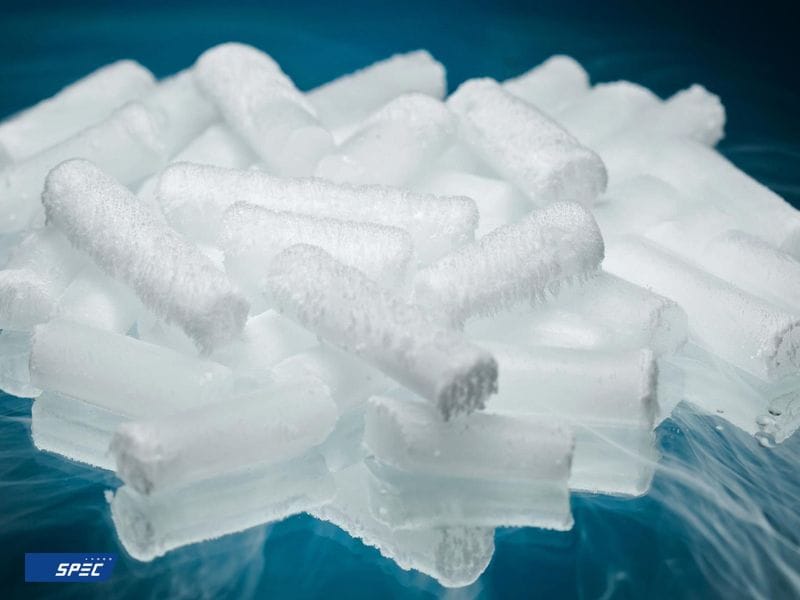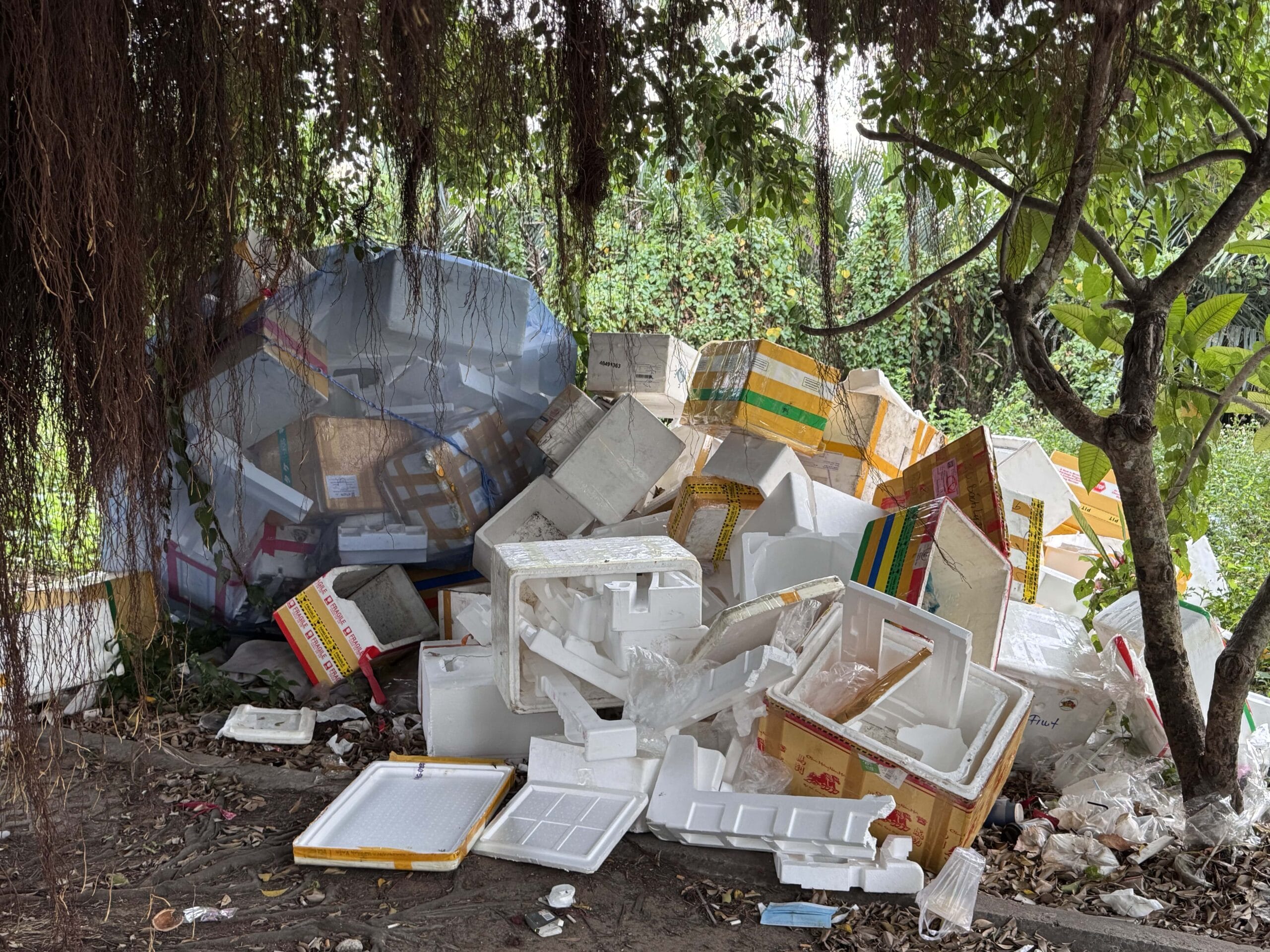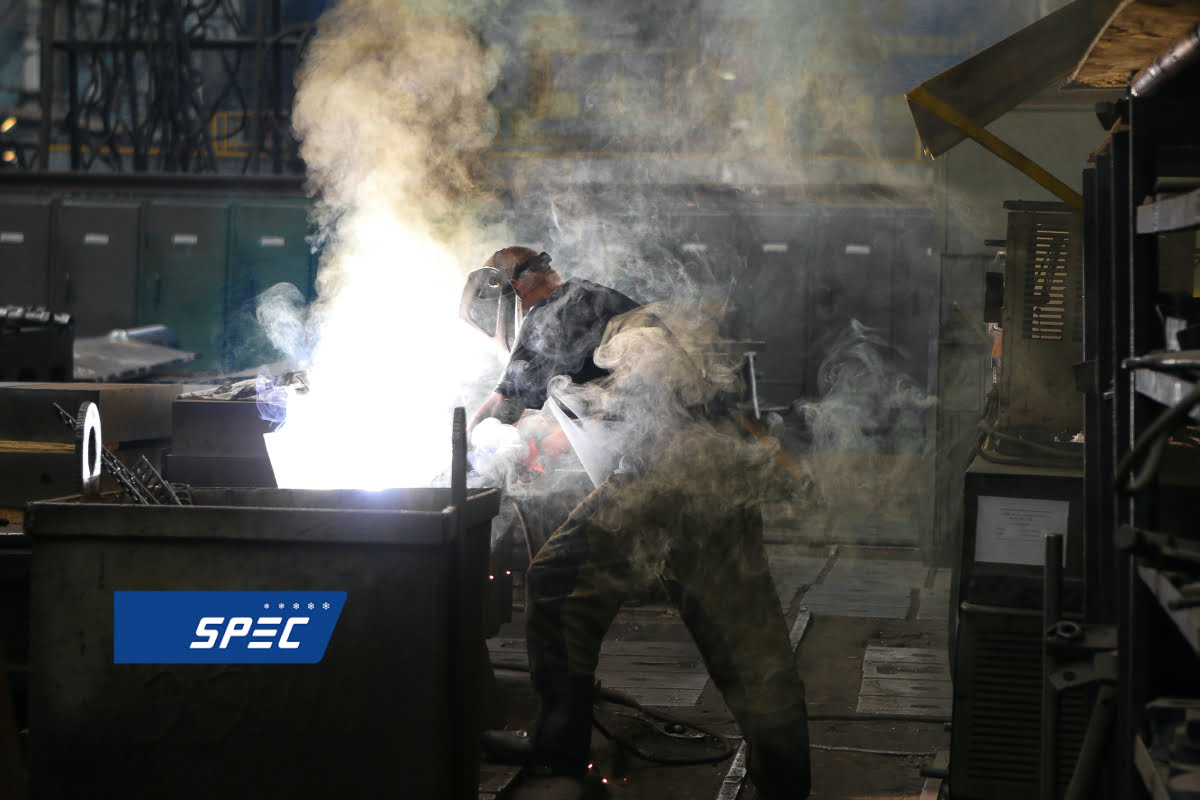Did you know that other than the purpose of keeping materials cold to preserve them in the best condition possible, dry ice also has other benefits and interesting facts? Well, today in this article let’s discover more about 7 outstanding facts about dry ice that you may not know of with the #Specco2team, shall we?
But first, what is dry ice?
Dry ice, also known as the solid form of CO2, is a freezing and cooling material with many practical uses. This type of media is also extremely diverse in size, they can be in the form of cubes, blocks, or even pellets,… The variety in shapes is made in order to meet the user’s needs and usage.
Another remarkable feature is that all dry ice used in the process of transporting is made from recycled CO2, a by-product of other industrial processes. Thanks to that, during the before and after usage, it does not produce or add harmful CO2 gas to the atmosphere! This material is considered to be completely environmental friendliness and therefore does not cause the greenhouse effect.

Interesting facts about dry ice you may want to know
Dry ice is freezing cold
Normally, liquid water freezes when the temperature turns down below 32°F (0°C) and we often see them in the form of ice cubes or blocks. However, for dry ice, they are made solely from CO2 that freezes at -109 degrees Fahrenheit ( -79°C) and is later compressed into either pellets or large blocks. Although these two might look similar but the temperature of dry ice is cold enough to the point that if you touch it with bare hands it can cause frostbite instantly.
In addition, this material is first created by a French scientist whose name is Adrien-Jean-Pierre Thilorier back in 1835 by converting carbon dioxide into its solid form using a compressor machine of his own invention.
There is no moisture when it comes to dry ice
Regular ice will start to melt at room temperature from time to time and transforms back to its liquid state but what about dry ice? There is no moisture at all. Because it is made from CO2 (carbon dioxide) so when the temperature changes, dry ice will turn (or sublimate immediately) back to its gaseous state and out in the open air. The whole process is completely dry and moisture-free as its name has suggested.
Dry ice can be used as a material to clean
Did you know that apart from preserving food and making fog, dry ice can also be used for cleaning many industrial applications by operating the dry ice blasting machine? This is all thanks to its wonderful feature which is non-abrasive. According to the Mohs scale of hardness, dry ice only ranges from level 1,5 – 2. It is therefore considered a very soft medium that can clean most surfaces without abrading or damaging them yet powerful enough to remove years of deposits from production line machinery. This is a huge advantage compared to traditional cleaning methods such as sandblasting or cleaning with detergents that will wear machines of over time and reduce the life time of the machine
Dry ice is good for the environment
Dry ice is a colorless, odorless media created as a by-product of other industrial processes; then collected and recycled. Because of its recycling feature, it will not affect the environment nor contribute to the greenhouse effect and global warming when used with dry ice blasting machines. It is also an EPA, USDA, and FDA-approved material thanks to its non-toxic, non-hazardous characteristic and is approved to use around food.
Dry ice is super essential for distributing the COVID-19 vaccine across the globe
When the COVID-19 vaccine such as Pfizer was first introduced to the world as an antidote to keep ourselves safe from the risk of being infected by coronavirus and its after-effect on our health, everyone was patiently waiting for it to be available globally. However, when en route, the Pfizer vaccine must be stored at negative -94°F in order to stay potent. This is a temperature that requires specialized material for preservation and that’s when dry ice comes in and and prove its power
Dry ice can’t be stored in poor ventilated areas
Dry ice cannot be stored in a closed environment (such as basements) because even a small amount of dry ice can evaporate and sublime into CO2 rapidly. This can be extremely toxic at high concentrations and dangerous to the user’s health. You can experience symptoms such as shortness of breath, respiratory arrest and unconsciousness when inhaling during transportation or work.Furthermore, they should be stored properly in the container dersigned for keeping dry ice. because when dry ice evaporates back into its gaseous form, it can result in pressure caused. Due to this, the container can even crack or explode.
Dry ice can keep things frozen longer
Dry ice has a more beneficial aspect than regular ice as it is solidified at an extremely low temperature. Thanks to this, it can provide superior cooling and longevity, allowing packaged frozen products to stay in a frozen state for extended periods. Did you know that if used with insulated containers such as those of OLIVO, dry ice can help preserve food or goods throughout the transporting process from 12 hours and up to 24 hours or even longer (2-3 days)? With this, you can rest assured that the goods are completely thermally protected and there is no cold chain interruption. Thereby, minimizing operating and maintenance costs compared to using specialized refrigerated trucks.
Conclusion
Dry ice has more to offer than it seems. Thanks to the use of this material, there is no longer leakage or water-forming during the shipping process. Making the preservation of food much easier and still having quality guaranteed. Furthermore, by using dry ice to clean industrial applications, workers are now less exposed to hazardous chemicals, the cleaning process is more sustainable and eco-friendly and the results are very satisfying with the pristine look on equipment and machines’ surfaces.
All in all, though as good as it sounds, we should still be cautious when it comes to handling dry ice in order to not get frostbite and for other working safety measures. We hope that you have a good read about 7 facts about dry ice!






